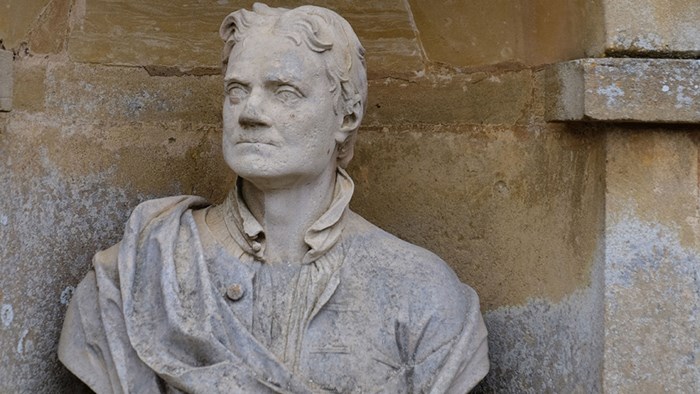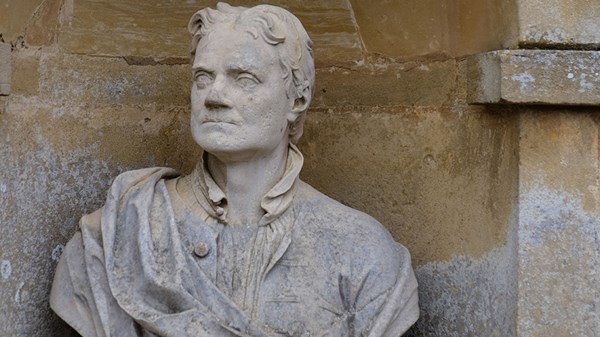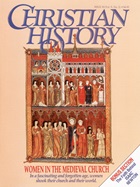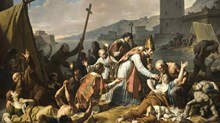
Nature, and Nature’s Laws, lay hid in Night.
God said, Let Newton be! and All was Light.
–Alexander Pope
Alexander Pope’s well-known epitaph epitomized Isaac Newton’s fame. Even in Newton’s lifetime, his contemporaries’ adulation verged on worship. Following his death in April 1727, Newton lay in state in Westminster Abbey for a week. At the funeral, his pall was borne by three earls, two dukes, and the Lord Chancellor. Voltaire observed, “He was buried like a king who had done well by his subjects.” No scientist before or since has been so revered and interred with such high honor.
Who was this man whose stature has dominated the scientific landscape for three centuries? Why did his achievements have such an impact on society? What role did Newton’s faith play in his life and work?
Newton’s Faith
For Newton the world of science was by no means the whole of life. He spent more time on theology than on science; indeed, he wrote about 1.3 million words on biblical subjects. Yet this vast legacy lay hidden from public view for two centuries until the auction of his nonscientific writings in 1936.
Newton’s understanding of God came primarily from the Bible, which he studied for days and weeks at a time. He took special interest in miracles and prophecy, calculating dates of Old Testament books and analyzing their texts to discover their authorship. In a manuscript on rules for interpreting prophecy, Newton noted the similar goals of the scientist and the prophecy expositor: simplicity and unity. He condemned the “folly of interpreters who foretell times and things by prophecy,” since the purpose of prophecy was to demonstrate God’s providence in history when “after [prophecies] were fulfilled, they might be interpreted by events.”
A member of the Anglican church, Newton attended services and participated in special projects, such as paying for the distribution of Bibles among the poor, and serving on a commission to build fifty new churches in the London area. Yet Newton seldom made public pronouncements regarding his theology. He is remembered instead for his pioneering scientific achievements.
Birth and Childhood
In June 1642 England began to suffer its first civil war. The year also witnessed both the death of Galileo in Italy and the birth of Isaac Newton in England.
Newton’s life took place against the backdrop of three locations within one hundred miles of each other: Lincolnshire, Cambridge, and London. Newton’s parents were country folk who lived on a small farm in Woolsthorpe north of London. Hannah Newton’s husband died soon after their marriage, at age 36. On Christmas Day, 1642, friends came to assist the young widow with the birth of her son Isaac. The baby was very premature and given little hope of survival; he was so small he could have been fitted into a quart pot.
When Isaac was 3, his mother—a strong, self-reliant woman—remarried and moved to a new home in the next village. The child stayed on at the isolated house, cared for by his grandmother, for the next eight years. Recent biographers have seen that separation from his mother, between the ages of 3 and 10, as influential in forming the suspicious, neurotic personality of the adult Newton.
In 1654, at the age of 12, Isaac entered the Old King’s School in Grantham, which had a good reputation for preparing students to enter Cambridge and Oxford. The boy reached the top of his class, became interested in chemistry, and continued building intricate mechanisms, including a windmill and a water clock. Instead of taking part in the rougher games at school, young Isaac became an avid reader. Early in life he developed a self-sufficiency and resourcefulness that served him well in later years of research.
After four years Isaac returned home to help his mother with the farm. Despite good intentions, he spent more time keeping a notebook of observations on nature than looking after the animals.
After two years of frustration his mother decided he should complete his course at Old King’s to prepare for the university.
Studies at Cambridge
In June 1661 Newton entered Trinity College, Cambridge, a community of four hundred scholars and students that was his home for most of the next thirty-five years.
The official curriculum was devoted mainly to Aristotelian philosophy—logic, rhetoric, and ethics. It developed Newton’s formidable ability to demolish the arguments of anyone who crossed him. The prescribed course also included mathematics, Latin, and Greek.
Newton studied physics and optics under Dr. Isaac Barrow, an excellent mathematician and Greek scholar. He was the first to recognize his student’s genius, and he introduced him to telescopes and current theories of light. The slumbering giant of Newton’s intellect suddenly awoke.
Most important for Newton, however, was the unofficial curriculum, his own readings. He explored the new philosophical world of the seventeenth century, and then moved to prominent scientific works, mastering Kepler’s Optics and nearly everything written about light. Since that subject called for experimentation, grinding lenses and building ingenious apparatus, it was made to order for his mathematical mind and deft fingers. He observed the stars and made notes that later led to a new theory of light and color. During his last undergraduate year, investigating mathematics and dynamics, Newton made phenomenal speed toward the frontiers of knowledge in both fields. In short, he was essentially self-taught in a wide range of subjects.
Scientific Developments
In 1665 flea-bearing rats carried the dread bubonic plague into congested London, where a fifth of the population died that summer. As the plague spread, students and teachers at Cambridge were sent home. Newton, with his new bachelor’s degree, packed his notebooks for a return to Woolsthorpe.
During the next two years, his reading and thinking, experimenting and writing, laid the foundations for his epoch-making work in three major areas: mathematics, optics, and celestial dynamics. Having invented the binomial theorem, Newton devised a method of calculation that later developed into calculus. He also discovered that white light contains the whole spectrum of colors, and he formulated the inverse square law for orbiting heavenly bodies.
In short, during this period Newton became one of the leading mathematicians and scientists in Europe. How did he do it? Among other abilities was the unusual gift of holding in his mind a mental problem for hours, days, and weeks until he had solved it.
Alchemy and Achievement
Cambridge University reopened in the spring of 1667. Two years later, at the age of 26, Newton was appointed to the prestigious Lucasian chair of mathematics, a professorship he held for the next three decades. With minimal teaching responsibilities, he turned his attention to optics and constructed a reflecting telescope; it caused a sensation when it reached London in 1671. Soon he was elected a Fellow of the Royal Society. He read before the society his New Theory about Light and Colors.
During the next decade Newton’s public scientific career dwindled as he devoted most of his time to private studies of chemistry, alchemy, and theology. Alchemists had long pursued a method to transmute base metals into gold, and during thirty years in Cambridge Newton labored for thousands of hours with his furnace as he pored over alchemical books. He communicated virtually nothing about his private passion to others. The extent of Newton’s interest in alchemy, long an embarrassment to his admirers, became generally known only in 1936 when his alchemical writings of about 650,000 words became public.
In April 1686 Newton officially presented to the Royal Society his magnificent three-part Mathematical Principles of Natural Philosophy. Written in Latin and known as the Principia, it was comprehensible mainly to mathematicians. Here the scientist demonstrated his greatest discovery, the law of universal gravitation: Every particle in the universe is attracted to every other particle by a force proportional to a product of their masses and inversely proportional to the square of the distance between them; F=(G m1 m2)/r2. Also presented were his three laws of motion. Among scientific writings, Newton’s Principia is unexcelled. It firmly established the new scientific approach to explaining natural forces and was soon taught at Cambridge. Nevertheless, Newton’s views were opposed on the Continent for several decades.
In 1693 the scientist suffered a nervous depression that lasted two years. It is likely that decades of overwork were taking their toll, possibly augmented by mercury poisoning from years of alchemy experiments.
Powerful Public Figure
During the last thirty years of Newton’s life the brilliant, retiring scholar became an influential public figure, attaining and ruthlessly wielding power.
In 1696 the king appointed Newton Warden of the Mint, and Newton took charge of the recoinage needed to stabilize a monetary crisis. He became an efficient administrator and shrewd political operator. He was responsible for prosecuting “coiners” who debased the silver coins by clipping their edges—an offense punishable by hanging. Newton took to the task with grim diligence. In 1699 he was appointed Master of the Mint. Two years later he resigned his professorship at Cambridge and moved to London where his niece Catherine Barton kept house for him.
In 1703 Newton was elected president of the Royal Society, which for two decades he ruled with an iron hand, taking offense at all who opposed his views. In 1705 he was knighted by Queen Anne. Newtonian science gradually swept the field as Newton secured for his bright young disciples positions where they could teach and write the science textbooks. Over the years he engaged in two long, bitter feuds with other scientists, one with the German mathematician Leibniz over who invented the calculus.
His Scientific Legacy
Isaac Newton died on March 20, 1727, at the age of 85, after several years of enforced rest. His death was regarded as a national loss. A vast industry grew up dedicated to his memory—medals, poems, statues. (Submerged in the torrent of adulation were criticisms of internal contradictions in his writings, his atomistic theory of matter, and his mechanistic world-view.) Newton had became a national hero as well as the model scientist. While Copernicus and Kepler had died in obscurity, and Galileo under house arrest, Newton enjoyed success—largely because his discovery of one simple kind of attractive force (universal gravitation) could explain the motions of the planets, moon, and tides.
In the twentieth century, Einstein’s expanding universe and Heisenberg’s indeterminacy have undermined Newton’s clocklike model of nature. Nevertheless, mathematical physicist Stephen Hawking, a current Lucasian professor at Cambridge, writes that “Newton’s theory will never be outmoded. Designed to predict the motions of the heavenly bodies, it does its job with unbelievable accuracy … it remains in daily use to predict the orbits of moons and planets, comets and spacecraft.… Newton is a colossus without parallel in the history of science.”
Theology and Science
Newton’s historical learning, including a knowledge of Jewish customs, was extensive. He also mastered the writings of the church Fathers. (Newton’s interest in the doctrine of the Trinity led him to study the fourth-century conflict between Athanasius and Arius, who denied the status of Christ in the Godhead. Convinced that a massive fraud had perverted certain Scriptures, Newton adopted the Arian position.)
Despite his intense biblical study and belief in a creating God, Newton observed the distinction between religion and science made by Galileo: “The Bible tells us how to go to Heaven, not how the heavens go.” During his presidency of the Royal Society, Newton banned any subject touching religion, even apologetics. He wrote, “We are not to introduce divine revelations into philosophy [science], nor philosophical [scientific] opinions into religion.”
Yet for Newton this distinction was not a divorce, much less a conflict. Although the books of God’s Word and his Works were not to provide the content of each other’s teachings, they were bound together. Newton did not consider one to be sacred and the other secular, nor did Copernicus, Kepler, Galileo, or Pascal—all practicing Christians. Only later Enlightenment philosophy produced a model of “warfare” between science and theology.
Newton’s theology profoundly influenced his scientific method, which rejected pure speculation in favor of observations and experiments. His God was not merely a philosopher’s impersonal First Cause; he was the God in the Bible who freely creates and rules the world, who speaks and acts in history. The biblical doctrine of creation undergirded Newton’s science. Newton believed in a God of “actions [in nature and history], creating, preserving, and governing … all things according to his good will and pleasure.”
Charles E. Hummel is author of The Galileo Connection and Genesis: God's Creative Call (both InterVarsity).
Copyright © 1991 by the author or Christianity Today/Christian History magazine.
Click here for reprint information on Christian History.

Support Our Work
Subscribe to CT for less than $4.25/month






























